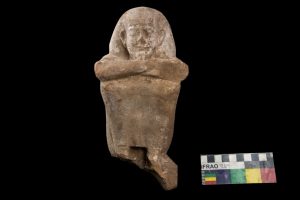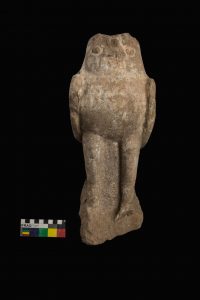Archaeologists working in the Aswan region, Egypt, made new discoveries at the ancient Egyptian city of Edfu, where a royal administrative complex has been uncovered, and at Kom Ombo, where new artefacts have been unearthed at the ancient temple.

Researchers from The University of Chicago led by Nadine Moeller uncovered a late Fifth Dynasty (2498–2345 BC) administrative complex at Tell Edfu, believing it is the oldest archaeological evidence to be found in Tell Edfu till now. According to Mostafa Waziri, secretary-general of the Supreme Council of Antiquities, the earliest known evidence at the site prior to the find are dated to the second half of the 6th Dynasty (2345–2181 BC). The complex sheds light on the royal expeditions organized during the 5th Dynasty reign of King Djedkare Isesi, who reigned from the late 25th to the mid-24th century BC. A collection of 220 mud brick stamps of King Djedkare Isesi were found inside the complex. The researchers believe that the site was also used as a storehouse for goods retrieved on King Isesi’s famous royal expeditions to Wadi Al-Maghara in South Sinai to extract raw materials, especially copper. The king is also known for ordering a famous expedition to Punt, an ancient kingdom on the Horn of Africa, to retrieve goods not available in Egypt. Nubian pottery and shells from the Red Sea were also found, as well as fragmentary evidence of mining activities. Archaeologists have also unearthed an official list containing the names of the workers who participated in the excavation and mining expeditions, including a commander by the name of “Sementio”.

Egyptian archaeological mission working on the dewatering project in Aswan’s Kom Ombo temple has discovered four ancient artefacts on the temple’s western side. The Temple of Kom Ombo was constructed during the Ptolemaic Dynasty between 180-47 BCE, during Egypt’s Hellenistic period. Among the newly discovered artefacts is a 40-by-27 centimetre limestone stele. The upper part of its left side is missing. The stele depicts a man and his wife presenting offerings to a seated deity. Other artefacts include a sandstone statue depicting a seated man, and two sandstone statues of the god Horus in the form of falcon without any inscriptions on their surface.

(after Ahram Online & Egypt Independent)